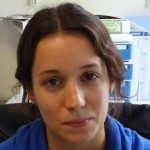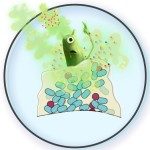Link to Pubmed [PMID] – 24399857
MBio 2014;5(1):e00944-13
UNLABELLED: Bacteria release a wide diversity of small bioactive molecules that often correspond to secondary metabolites. Among them, volatile molecules produced under various growth conditions were shown to mediate cross-kingdom interactions with plants, nematodes, and fungi. Although the role of volatile compounds in bacterial biology is not well understood, recent reports indicated that they could play a role in airborne interactions between bacteria and influence antibiotic resistance, biofilm formation, and virulence. In this study, we investigated long-distance effects of 14 previously described Escherichia coli volatile compounds upon the bacteria E. coli, Pseudomonas aeruginosa, Staphylococcus aureus, and Bacillus subtilis. We show that several of these molecules constitute chemical cues influencing growth, adhesion, and motility in exposed bacteria. Moreover, we show that aerial exposure to trimethylamine (TMA), a volatile compound produced in animal intestines and tissues upon biogenic reduction of trimethylamine oxide (TMAO), modifies the antibiotic resistance profiles of all tested Gram-positive and Gram-negative bacteria. We demonstrate that the TMA mode of action is distinct from that previously described for ammonia and results from nonspecific transient alteration of antibiotic uptake due to pH increase in the environment of bacteria aerially exposed to TMA. Our study therefore presents a new way by which volatile compounds can affect community behavior and structure in physically separated bacteria. It further demonstrates that bacterial gases and volatile compounds mediate chemical interactions, triggering functional responses that play an important role in the development of bacterial communities.
IMPORTANCE: Bacteria release many different volatile compounds during food transformation and fermentation. Here we sought to investigate the role of several bacterial volatile molecules released by Escherichia coli during long-distance airborne interactions with other bacteria. While several tested volatiles affect bacterial motility and surface adhesion, we show that aerial exposure to trimethylamine, a molecule produced by E. coli and many other Gram-negative bacteria in animal intestines and infected tissues, also modulates antibiotic resistance in all tested bacteria. We demonstrate that exposure to trimethylamine increases the pH of the growth medium of exposed bacteria, resulting in modifications in antibiotic uptake and transient alteration of antibiotic resistance. Our study therefore presents a new mechanism by which volatile compounds can affect community behavior and structure in physically separated bacteria, and it illustrates how airborne chemical interactions between bacteria contribute to the development of bacterial communities.






